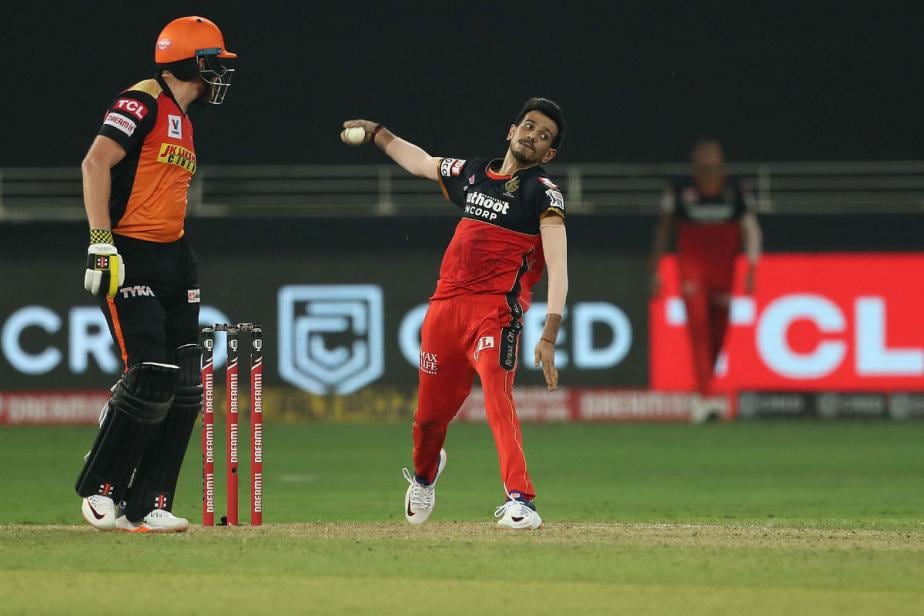This entry is devoted to discussing a very specific aspect of spin bowling that has been observed over the years. It is on the lines spinners bowl when they use their variations.
Free Hit contributor – Keshan Dissanayake
In quick time – we try to traverse among the gods – Murali, Warne – in grassroots cricket, inside the mindset of batters and then talk about some tactical play. Take a read and see if you agree.
Murali
The last few years of watching Muttiah Muralitharan were both fascinating and equally frustrating. As to why it was fascinating – is stating the obvious. Everybody knows what he brought to the game. He was a next level genius. There is nothing to dwell on that.
But Murali’s threat level dwindled, and he was picked off more easily by the opposition as dusk was settling in on his career. It usually happens with any player as they near retirement but in Murali’s case, it wasn’t due to a lack of form or because he was aging.
It was more to do with not holding back in certain instances. I’ve always felt that with a little bit more restraint, he could have maintained his fear factor for much longer and possibly even upped that wicket tally even more.
And that’s not in reference to modern times and how batting techniques have had to adapt with DRS or how umpires have become more fearless in giving decisions. No, this is solely to do with his Doosra. How he used his main variation, in the last few years of his career. And that was the frustrating part.
Play for the Wrong ’Un

Of late we’ve seen a sudden surge of wrist spinners. They are less your traditional spinners, who rely a lot on their stock ball, flight and guile but more, who depend on faster, flatter trajectories with a heavy dose of variations to boot.
Now this is mainly dictated by the shorter formats of the game. Shane Warne always talks about how in limited overs cricket the mindset should be to attack with the ball and defend with the field while the opposite of which needs to happen in Test Cricket.
These days it is generally tough to adjust between the formats. Think Wanindu Hasaranga, whom us Sri Lankans expected to take up Test Cricket with the same energy and success based on his current limited overs form.
The abundance of 2020 cricket being played has also led to a lack of patience by bowlers in the test game to properly workout a batsman. Nowadays, no matter the format, a single over consists of so many different deliveries.
And the funniest bit about that: For some you see the call sheet saying ‘Right Arm Leg Spin’, but then you hear people talking about playing for the wrong ‘un and treating the actual craft of that bowler as a random occurrence. I tend to find that quite annoying to be honest.
Use it Wisely!
In his 2001 auto-biography Shane Warne had entire chapters devoted to talking tactics, captaincy, strategy etc. towards the latter half of the book. (I highly recommend that book to anyone. There is a section on the future of the game there, which was an absolutely fascinating read)
In it, Warne talks about using the Googly. It wasn’t his strongest suit. You can tell it coming from a mile away as he bowls it from the back of his hand. He’d be the first one to put his hand up and admit as much too. But he talks about using the Googly in a more psychological sense. Specifically, when a new batsman arrives at the crease, whether he is facing up or at the non-striker’s end – just deliver a Googly first up, he says.

His point being, despite all the knowledge any batter might have coming to the crease, it would still let them know that the threat is real. You are dealing with a bowler, who can spin it both ways. Thereafter avoid bowling the Googly as much as possible. It builds anticipation slowly and methodically.
If you watch closely, you will see this happening a lot in modern day cricket, at least the first part of it. Batsmen are immediately greeted with a Googly or another variation. It probably has nothing to do with them reading up on Warne’s ancient book. The thinking is slightly different too I believe, with expectation of more immediate results. But some way or form it is happening.
These things – having the luxury of time for a plan to simmer and develop and then suddenly explode at frantic pace much like in a Quentin Tarantino film is what makes the Test game so fascinating.
Watch the Ball
Today, batsmen operate in another dimension. The sheer audacity and innovative thinking on display is just unparalleled. But I believe we can argue about their batsmanship compared to the players of yesteryear.
From Day 1 until the end of days, one of the first things you hear as a batsman – padded up at training – is to watch the ball.
Watch the ball.
Not a day goes by at cricket practice, without a coach bellowing that out loud at every opportunity. You are taught to read the delivery off the hand, so that it gives you as the batsman ample time from there, to pick the line and length and manoeuvre the field. If you are consistently failing to pick it off the hand, the next thing to do is to try and read it off the pitch, which of course gives you very little time. But with mystery spinners sometimes there is no other choice.
The Third Act
In the early years of 2020 cricket, it was common to think that spinners in general will get tonked to no end. But the years that followed have proven anything but that. In fact, wrist spinners have had a remarkable rise in T20 cricket. As discussed before, there could be a lack of patience creeping into the craft. However, be that as it may, the Googly and other forms of variation they possess have been a large part of their success as well.
In T20 Cricket, all you get is 4 overs and each over is supposed to be an event. There’s simply not enough time to take the longer route and slowly lure the batsman into a trap over the course of a spell, as mentioned before. To be fair, forget each over, rather every delivery is an event, and thus we hear pundits going ‘as a batsman its best to set up for the wrong ‘un rather than the stock ball’.
For batsmen, picking the variation and knowing what is coming at you is the bout. It is a great place for a bowler to be in, when even before a delivery is bowled, the batsman is trying to second guess the ball in an already time bound format. And in present day, a lot of the time, many batsmen struggle to pick the variation off the hand. And what follows after is the focus of all the build-up in this piece.
****
Let’s take a right arm leggie to a right-hand batsman for example. And let’s also say he’s a bit of a mystery. The batsman has no idea how to pick his variations. First, he bowls a traditional leg break on middle and leg. It curves and dips and pitches in line, brings the batsman forward and spins away.
Good ball.
It beats this batsman. He notices the spin, the dip, everything. It prickles his thought process. He walks away, gathers his thoughts and clears the mind – ready to focus on the next ball.
The next ball is the Googly.
Recall the part where we spoke about batsmanship earlier? Well here goes. The batsman doesn’t pick it off the hand. But it’s coming in from a line outside the off stump. Ideally shouldn’t that trigger something? When there is such a drastic change in line? If it is a big ripping leg spinner on that line, it would easily be either wide or quite a harmless delivery. Yet going by the recent past, sometimes they still get beaten. Not every batsman of course, but most do.
From a bowler’s perspective – you would prefer if the variation doesn’t come with such a big premonition attached to it for batsmen to pick up on. Especially since many of the batsmen are failing to read them off the hand as well.

In the example above, it would have been ideal had the spinner sent in another leg spinner, which pitched closer to off stump or just outside, maybe with not as much spin. Or perhaps, the first delivery itself to be that much closer to off stump and with less spin imparted.
This way, you are setting the batsman up for the leg spinner around that line too. Of course in a test game, you have much more room to drag this out slowly and even if the batsman takes a single you have time to go back to the plan.
You may ask, why go through the trouble if batsmen are already finding it difficult without any of these adjustments. But that is only for a matter of time and short term. With the countless hours of video analysis footage available, in time, these things will be picked up.
Disguising the delivery via as many avenues as possible that batsmen can potentially look for, only increases your chances of success and longevity. In my experience of watching cricket over the years, the good batsmen of spin of the previous generation were much more apt at reading those signs – such as a massive change in line within the space of two deliveries. As a result, they were in better positions to play spin.
Back to Murali
Which brings us full circle, back to Murali.
In his last few years, Murali banked on the Doosra a little too much for my liking. He probably overused it. It was also the case that because Murali’s stock delivery spins big and it was aimed at around the 6th to 7th stump line or even further away, his line changed dramatically when it was the Doosra. So much so that he overcorrected it to pitch it on middle and off stump to a right hander. The opposition sides picked up on it.
The Doosra since, never really posed the same threat.
It also did not help the fact that Murali hated going for runs. Often if he goes for a boundary, Murali would follow that delivery up with a Doosra. It almost felt like it was taken for granted and batsmen would sit back and wait for the delivery unlike when he used it sparingly. And if I may, unfortunately in the final few years, it sort of concealed Murali’s genius as well.
*********
Keshan is a cricket lover. Follow him on Twitter at @KeshanSD.
*Disclaimer: The views and opinions expressed in this article are those of the author’s and do not necessarily reflect the official policy or position of ThePapare.com.




















